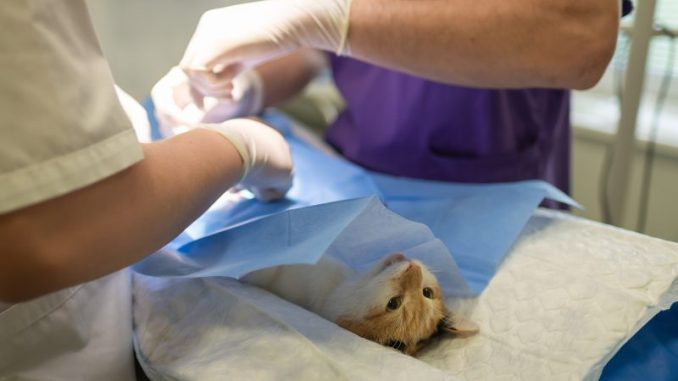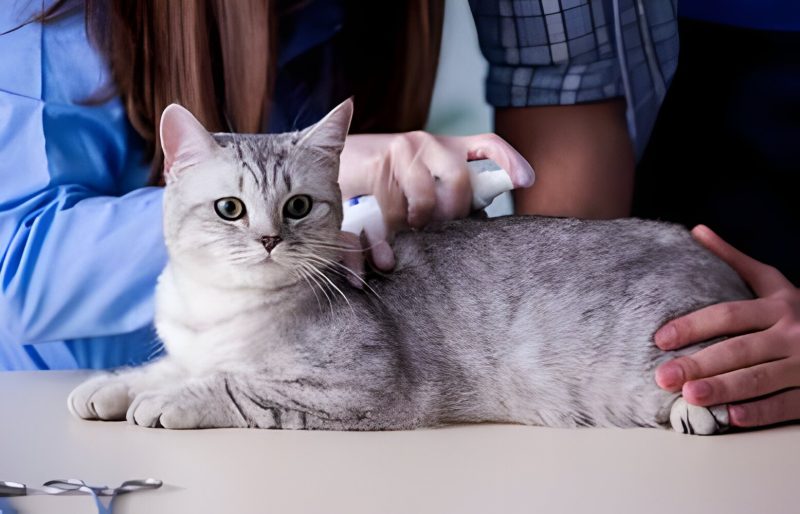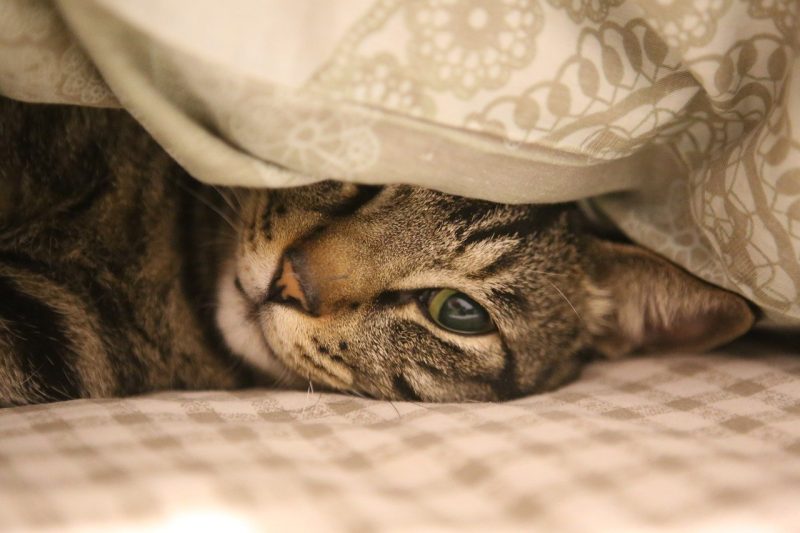
When it comes to responsible pet ownership, spaying your cat is a crucial decision. Many pet owners wonder “When is it too late to spay a cat?
While spaying kittens certainly has its advantages, fear not if your feline companion isn’t a tiny whiskered wonder anymore! The misconception that spaying is limited to young cats is a myth. The truth is, your older cat can still reap the health benefits and contribute to population control through this safe procedure.

Definition of Spaying: When is It Too Late to Spay a Cat?
Female felines often undergo a surgical operation called spaying, also referred to as ovariohysterectomy, which involves the removal of their reproductive system. By extracting the ovaries and uterus, this procedure effectively prevents the cat from conceiving and having kittens.
Importance of Spaying for Cat Health and Population Control
Having your cat spayed is important for keeping them healthy. This procedure can help reproductive health problems like infections and tumors. Furthermore, spaying can assist in managing the cat population by decreasing the amount of stray cats.
Common Misconceptions About the Right Time to Spay
A widespread myth among feline caregivers is that allowing a cat to go into heat or have a litter before spaying is beneficial. On the contrary, the opposite is true. Spaying before the cat’s initial heat cycle has been shown to dramatically decrease the likelihood of certain types of cancer and completely prevents unplanned breeding.
It’s important to debunk myths surrounding the ideal timing for spaying to make informed decisions about your cat’s reproductive health.
Ideal Age for Spaying: When is It Too Late to Spay a Cat?
Recommended Age Range for Spaying
It is essential to have your cat spayed at the appropriate time to ensure her health and happiness. The ideal age for spaying usually ranges from 4 to 6 months. It is crucial to seek advice from your vet to decide on the most suitable timing for your specific cat.
Benefits of Early Spaying
spaying your cat at a young age provides a multitude of advantages. By doing so before they reach sexual maturity, you dramatically decrease the likelihood of your pet developing specific types of cancer and contracting infections. Furthermore, early neutering plays a crucial role in managing feline overpopulation by eliminating the possibility of unplanned breeding.

Considerations for Kittens vs. Adult Cats
Spaying kittens is typically a simple procedure with minimal risks, but spaying adult cats is also widely practiced and safe. Nevertheless, there might be slight differences in the recovery process for kittens compared to adult cats. It is advisable to consult your vet for personalized advice on the most suitable course of action depending on your cat’s age and overall health condition.
Every cat is one-of-a-kind, which means a approach that’s effective for one cat may not be suitable for another. When contemplating spaying, it’s crucial to take into account your cat’s distinct needs and situation.
Is It Ever Too Late to Spay?
When is It Too Late to Spay a Cat?
The ideal age for spaying older felines is a subject of debate, sparking discussions about the perfect moment to perform the surgery. Unlike kittens, which are typically spayed between 4 to 6 months, deciding when to spay a mature cat is a more complex decision.
The notion of “waiting too long” for spaying implies that there is an age threshold beyond which the potential drawbacks may surpass the advantages.
Spaying Older Cats: Risks and Benefits
Spaying older cats can be riskier compared to spaying kittens, as factors like pre-existing health issues, sensitivity to anesthesia, and recovery difficulties can contribute to increased risks. Older cats are more prone to surgical, which require a more careful approach during the procedure.
Factors that May Influence the Decision to Spay an Older Cat
Various factors are important in deciding if it is spay an older cat. The cat’s general health, age, breeding background, and any existing medical issues are key factors to take into account It is crucial to seek advice from a veterinarian in order to assess the specific circumstances of the cat.
When deciding, pet owners must thoughtfully balance the potential drawbacks and advantages, always prioritizing the health and happiness of their beloved cat.

Health Considerations for Late Spaying
Potential Complications in Older Cats
- Older cats may have underlying health issues that can complicate the spaying procedure.
- Anesthesia sensitivity is higher in older cats, increasing the risk of adverse reactions during surgery.
- Post-operative complications such as infections or delayed wound healing are more common in older cats.
Pre-surgery Health Assessments
Before sterilizing a mature feline, comprehensive medical evaluations are essential. Veterinarians will assess the cat’s general well-being, screen for potential health issues, and perform blood work to confirm the cat’s suitability for the surgical procedure.
Recovery Process Differences Between Young and Older Cats
The recovery period for an older cat following spaying surgery might be lengthier than that of younger cats. It is crucial to create a calm and cozy space for the cat to recuperate well. Older cats may require additional attention and supervision after the operation to guarantee a successful healing process.
Special Cases: Pregnant and Nursing Cats
Spaying during Pregnancy: Ethical Considerations
Spaying a pregnant cat can pose ethical dilemmas because of the growing kittens. Although it is feasible to spay a cat while she is pregnant, it is typically advised against unless a veterinarian deems it essential for medical purposes. The choice must consider both the well-being of the mother cat and the kittens in utero.
Waiting Period After Giving Birth
Following the birth of kittens, it’s recommended to postpone spaying the mother until she has fully recuperated. The optimal time frame for this delay can vary, but it usually falls between a short period of weeks to a few months. This pause enables the mother cat to recover from the physical demands of childbirth and ensures she is physically prepared for the spaying procedure.
Effects on Nursing Kittens
Spaying a cat that is nursing can have implications for her kittens. If the mother cat is spayed she is still nursing, it might interfere with the nursing routine and impact the kittens’ nourishment. It is important to take into account the well-being of both the mother cat and her young ones when deciding whether to spay a nursing cat.
Making the Decision
Consulting with a Veterinarian: When is It Too Late to Spay a Cat?
It is important to seek advice from a veterinarian when considering whether to have your cat spayed. Veterinarians can offer tailored recommendations taking into account your cat’s individual health and requirements. They will evaluate your cat’s general well-being, take into consideration any preexisting health issues, and suggest the most appropriate time for the surgery.
Weighing the Pros and Cons
Prior to reaching a conclusion, it’s crucial to carefully consider the advantages and disadvantages of spaying your feline companion. On one hand, the procedure yields significant health advantages and plays a vital role in managing the feline population; on the other hand, it also carries potential surgical risks. Gaining insight into these factors and their relevance to your cat’s unique situation is vital in making a well-informed choice.
Considering Alternatives
Spaying may not be suitable for some cats because of health concerns or other. If spaying is not recommended for your cat, it is crucial to consider other options. Your vet can recommend different ways to pregnancies or address your cat’s reproductive health without spaying. By discussing with your vet, weighing the pros and cons, and exploring alternatives as needed, you can make the right choice for your cat’s health. Keep in mind that every cat is different from a professional is essential.

Conclusion: When is It Too Late to Spay a Cat?
Recap of Key Points
- Spaying is crucial for cat health and population control, reducing cancer risk and preventing unwanted litters.
- The recommended age range for spaying is typically between 4 to 6 months for optimal health benefits and population control.
- Consulting with a veterinarian is essential to make an informed decision based on individual cat’s health and circumstances.
- Spaying older cats carries higher risks due to factors like anesthesia sensitivity and recovery challenges.
- Factors such as overall health, age, reproductive history, and medical conditions influence the decision to spay an older cat.
- Spaying during pregnancy should be carefully considered, with surgery during pregnancy generally not recommended unless medically necessary.
Emphasis on the Importance of Spaying Regardless of Age
Irrespective of a cat’s age, spaying is crucial for ensuring their overall health and contributing to the management of the feline population. Spaying at a young age brings multiple health advantages and curbs population growth, while spaying older cats can still be a worthwhile option under the careful supervision of a veterinarian. It’s always a good time to take proactive measures to safeguard the health and quality of life of your cat through spaying.
Encouragement to Consult Professionals for Personalized Advice
Consulting with a veterinarian is crucial when deciding whether to spay your cat. Veterinarians provide personalized recommendations based on your cat’s individual health requirements and situation. By seeking expert advice, you can guarantee that the spaying procedure is carried out safely and efficiently, benefiting the well-being and lifespan of your cherished companion.





Be the first to comment